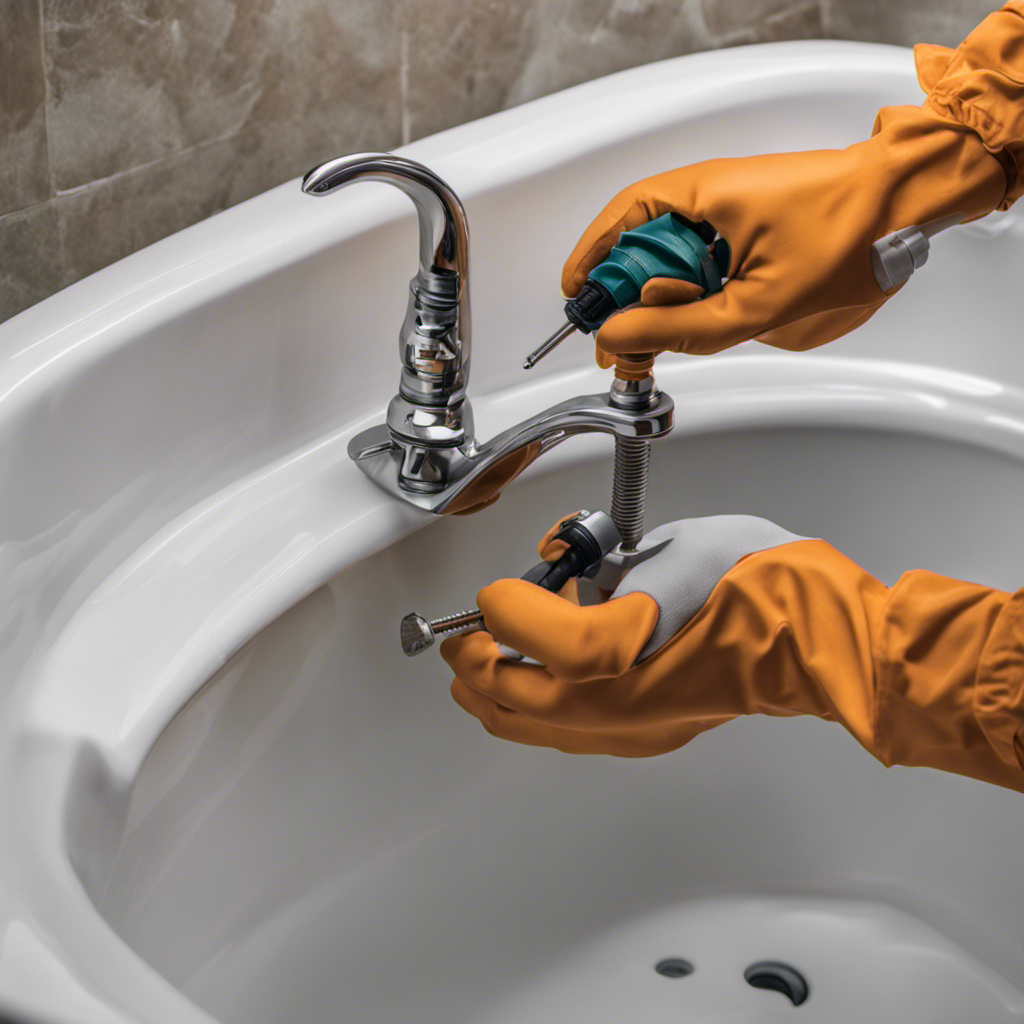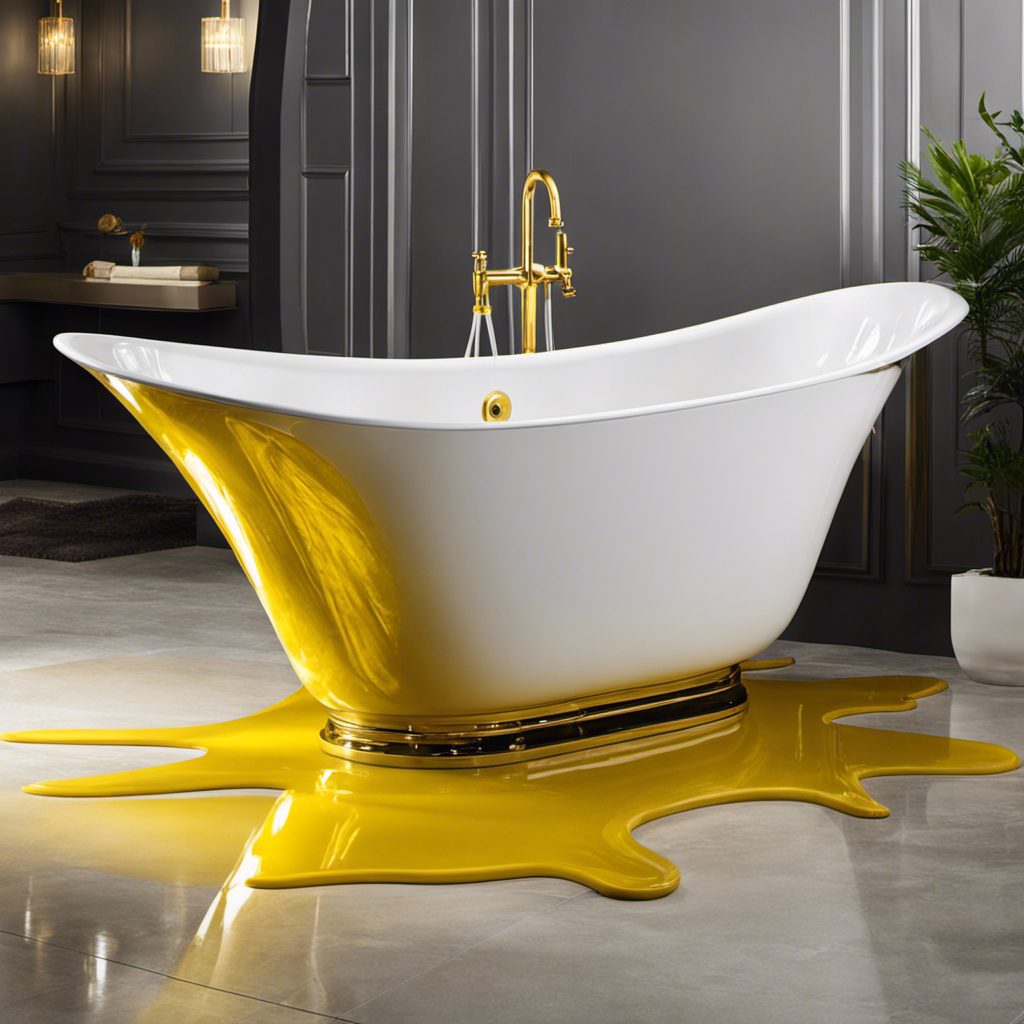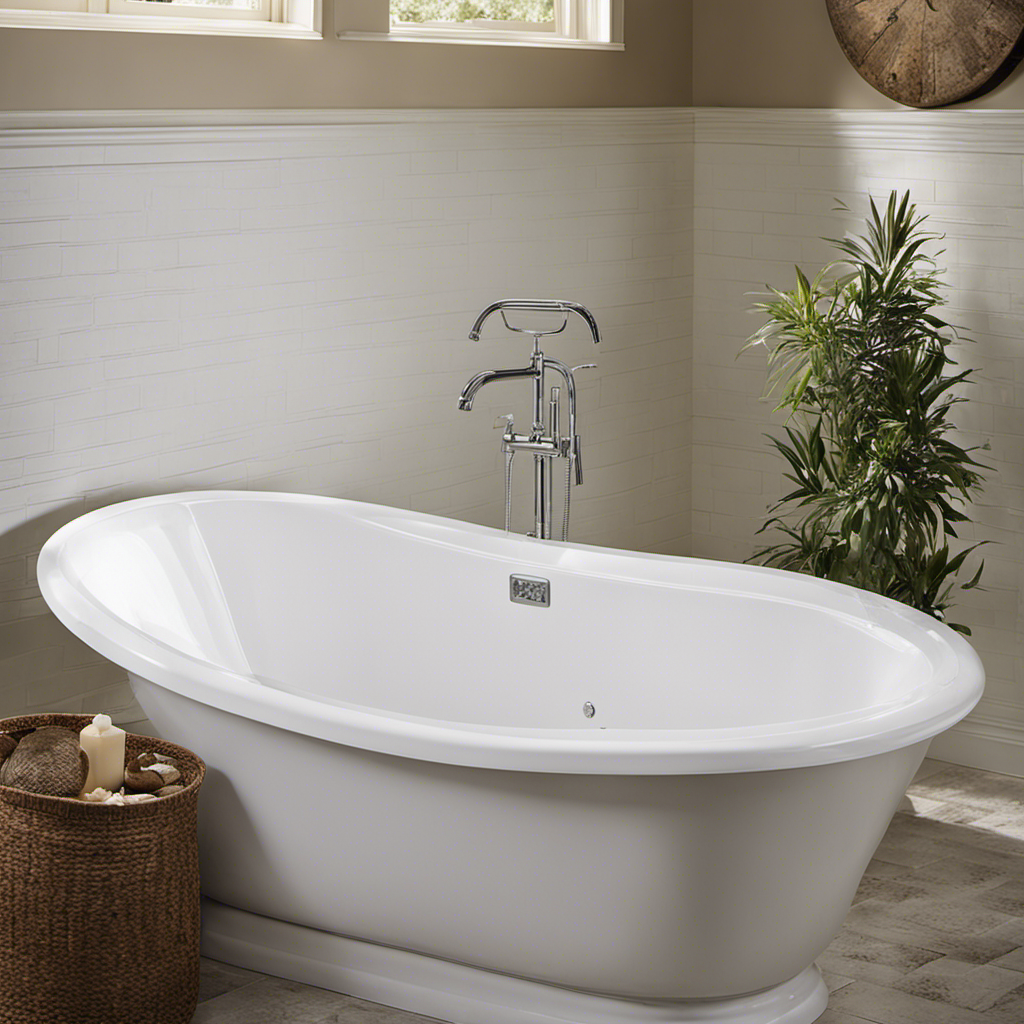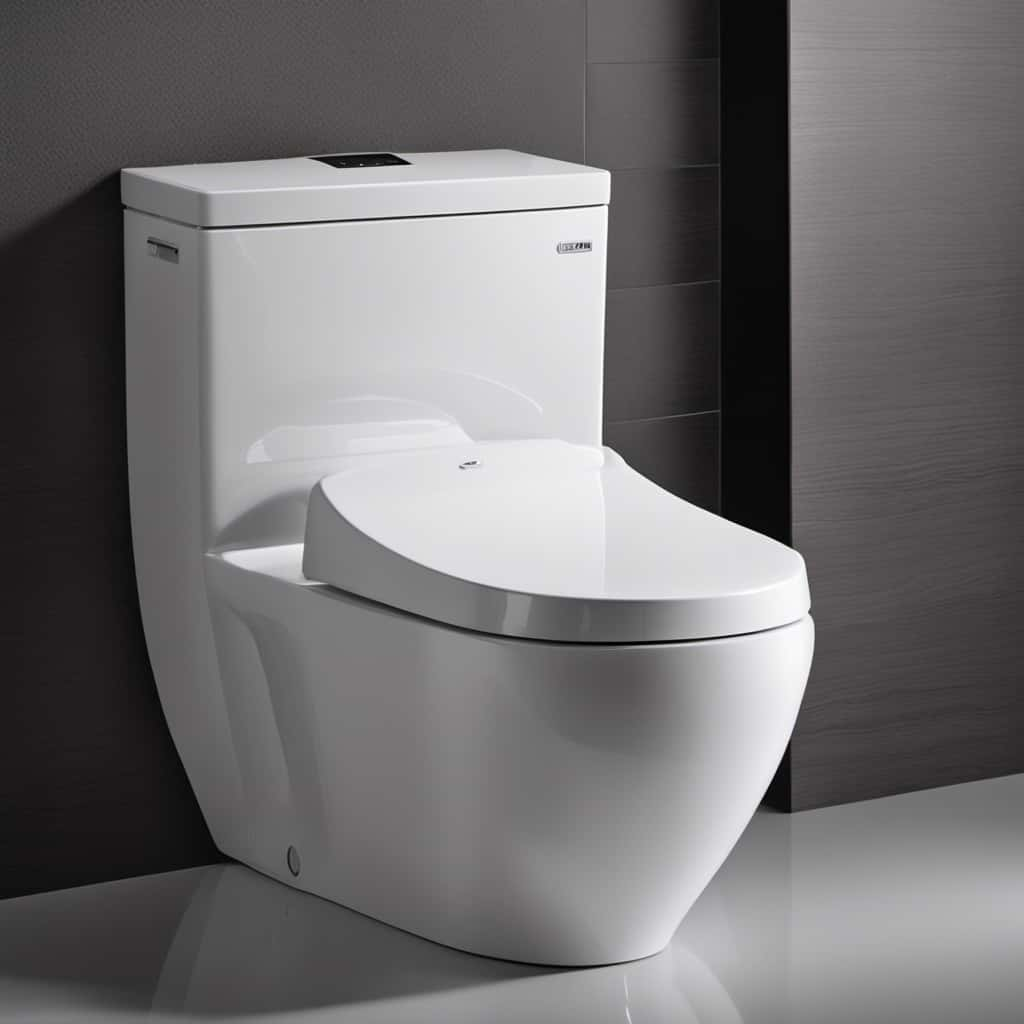Hey there! Ever found yourself in a sticky situation with a clogged bathtub drain? Well, fear not, because I’m here to guide you through the process of removing that pesky drain.
In this article, I’ll walk you through the tools and materials you’ll need, provide a step-by-step guide, offer troubleshooting tips, and even discuss safety precautions.
So, grab your wrench and let’s get started on reclaiming that smooth-flowing bathtub!
Key Takeaways
- The tools and materials needed for removing the bathtub drain include a screwdriver, pliers, a drain removal tool, and the identification of the type of drain (pop-up, trip lever, lift-and-turn).
- The step-by-step guide for removing the bathtub drain includes unscrewing the metal plate covering the drain hole, accessing the drain for removal, and understanding best practices for maintaining and cleaning the drain.
- Common challenges when removing the bathtub drain include dealing with stubborn screws, using the right tools and applying penetrating oil, and prioritizing safety by wearing protective gloves and eyewear.
- Safety precautions to consider when removing the bathtub drain include wearing protective gloves and eyewear, avoiding damage to the surrounding area, and protecting hands from sharp edges and eyes from debris.
Tools and Materials Needed for Removing the Bathtub Drain
To remove the bathtub drain, you’ll need a screwdriver, pliers, and a drain removal tool. Before beginning the process, it is important to identify the type of bathtub drain you have.
There are different types, such as pop-up drains, trip lever drains, and lift-and-turn drains. Each type may require slightly different removal techniques.
Once you have determined the type of drain, you can proceed with the removal process. Start by using the screwdriver to remove any screws or fasteners holding the drain cover in place.
Then, use the pliers to grip the drain body and turn it counterclockwise to loosen it. If the drain is stubborn, you may need to use a drain removal tool to provide additional leverage.
Step-by-Step Guide to Removing the Bathtub Drain
Start by unscrewing the metal plate covering the drain hole. This will give you access to the bathtub drain and allow you to proceed with its removal.
There are several alternative methods for repairing the bathtub drain, but before you can address any repairs, it is important to understand the best practices for maintaining the bathtub drain.
Regularly cleaning the drain and ensuring it is free of debris can help prevent clogs and potential damage. Additionally, using a drain strainer can help catch hair and other particles before they enter the drain. By following these maintenance practices, you can prolong the lifespan of your bathtub drain and minimize the need for repairs.
Now, let’s dive into the common challenges and troubleshooting tips for removing the bathtub drain.
Common Challenges and Troubleshooting Tips for Removing the Bathtub Drain
One common challenge when removing the bathtub drain is dealing with stubborn screws that won’t budge. This can be frustrating and can impede progress. However, there are tips for success that can help overcome this challenge.
Firstly, it is important to ensure that you have the right tools for the job, such as a sturdy screwdriver and possibly a wrench for added leverage. Applying penetrating oil to the screws and allowing it to sit for a few minutes can also help loosen them.
Additionally, using heat to expand the metal around the screws can make them easier to remove. If all else fails, tapping the screws lightly with a hammer can help break up any rust or corrosion.
Safety Precautions to Consider When Removing the Bathtub Drain
Make sure you take safety precautions, such as wearing protective gloves and eyewear, when removing the bathtub drain. It is important to prioritize your safety to prevent any injuries during this process. Additionally, taking these precautions will help protect the bathtub surface and prevent water damage.
When removing the bathtub drain, it is essential to be cautious and avoid causing any damage to the surrounding area. By wearing protective gloves, you can ensure that your hands are shielded from sharp edges and potential contaminants. Similarly, wearing eyewear will protect your eyes from any debris that may be dislodged during the removal process.
Taking these safety measures will not only safeguard your well-being but also ensure that the bathtub remains intact.
Now let’s explore some alternative methods for removing the bathtub drain.
Alternative Methods for Removing the Bathtub Drain
Before diving into alternative methods, let’s first consider the effectiveness and ease of using a drain removal tool. This tool is specifically designed to help homeowners remove their bathtub drains without the need for professional assistance. It is a cost-effective solution that allows you to tackle the problem yourself. However, if you are not comfortable using a drain removal tool or if you have tried it without success, there are alternative options to consider. One option is using chemical solutions for unclogging bathtub drains. These solutions are readily available in most hardware stores and can dissolve hair and other debris that may be causing the clog. Another option is hiring a professional plumber for drain removal. While this may be a more expensive option, it guarantees that the job will be done correctly and efficiently, saving you time and frustration.
| Pros | Cons | Cost |
|---|---|---|
| Easy to use | May not be effective for severe clogs | Affordable |
| Can dissolve hair and debris | Chemicals can be harmful if not used properly | Varies depending on brand |
| No need to hire a professional | May take some time for the solution to work |
Conclusion
Well, congratulations on successfully tackling the task of removing your bathtub drain! You’ve certainly proven yourself to be quite the handy individual.
By following the step-by-step guide and considering the common challenges, you were able to overcome any obstacles that came your way.
Remember, safety should always be a top priority, so taking the necessary precautions was a wise decision.
If you ever find yourself faced with this challenge again, don’t forget there are alternative methods to explore.
Keep up the great work!










